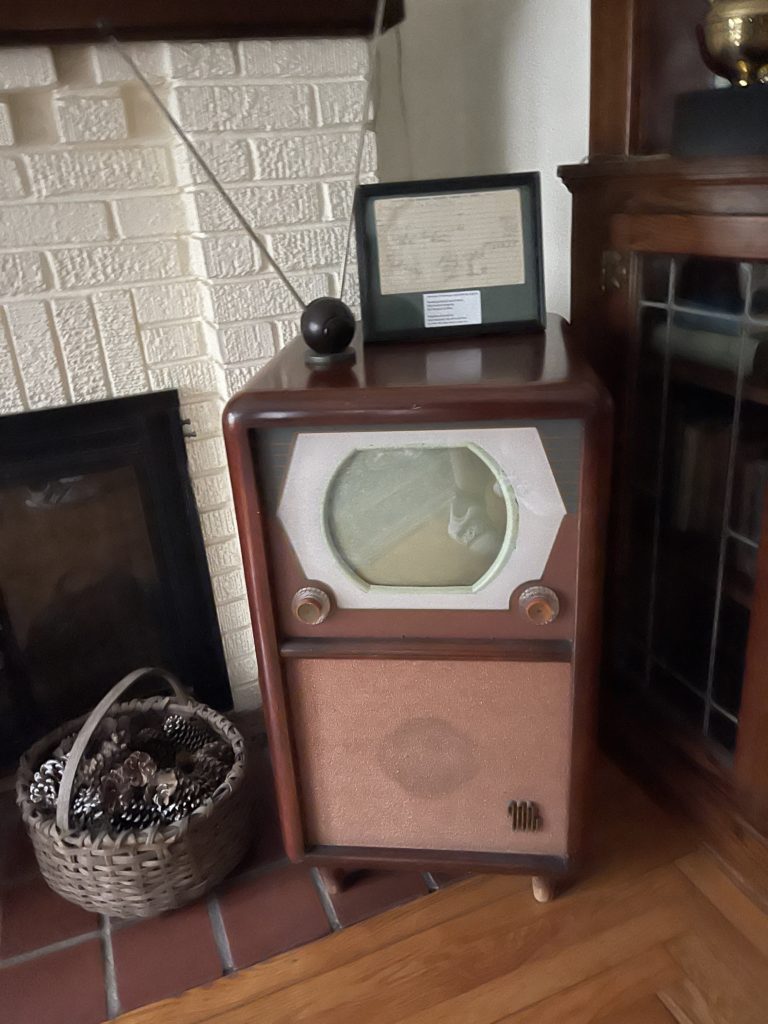This week, I bring you another appliance of note from the Miller House Museum. This Motorola brand television dates to 1949, when it was purchased new on October 4th of that year by Ruth McDonald Doer and her Husband Harold Doer. The original price: $210.55 , about $2,400 in today’s money. It’s display is black and white, is mounted on top of an integrated stereo speaker, and the antenna on top was a later addition. The screen is tiny, a large man could span it with a single hand. While today this seems tiny, it actually represents quite a bit of progress from the earliest days of television.

The groundwork for the electronic Television began in 1897 with the invention of the Cathode Ray Tube (CRT). While this device was origianally just a novelty, forward thinkers began to envision the use of CRTs for visual signaling at a distance. It was with the invention of camera tubes in the mid 1920s to early 1930s that broadcasting television became a reality. By the mid 1930s, limited television broadcasting began, and as early as 1941 America was enjoying the first consumer grade televisions for home use. These were mainly toys for the wealthy though, and it wasn’t until the late 1940s and early 1950s, in the economic prosperity following WW2 that it saw wider adoption by the public. Around this time, color TV was first created, though the general public would have to wait until the mid 1960s before it became practical and affordable.
Thus, black and white Televisions such as these were top of the line appliances in their day and age, and many a family experienced the very beginnings of American TV culture.